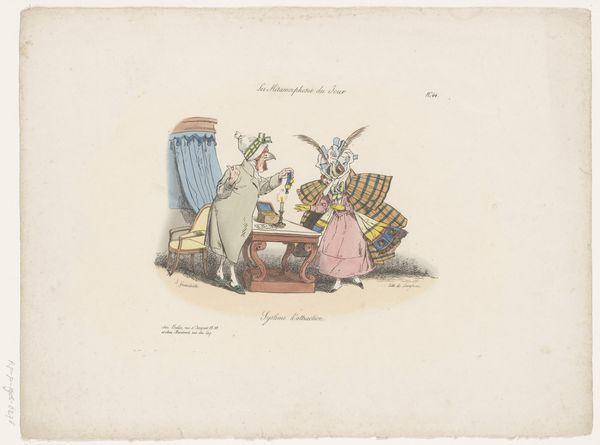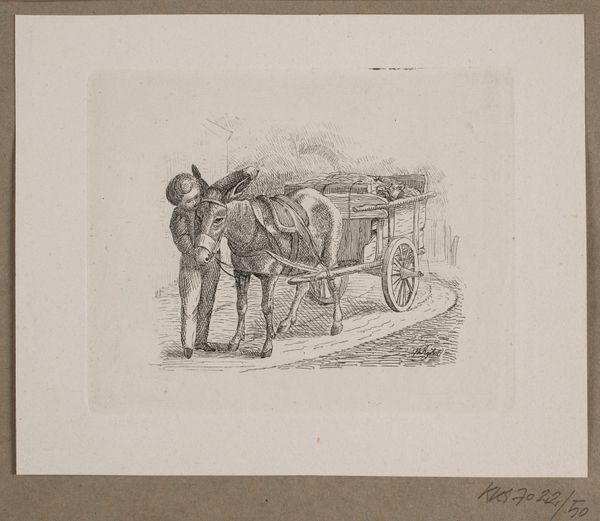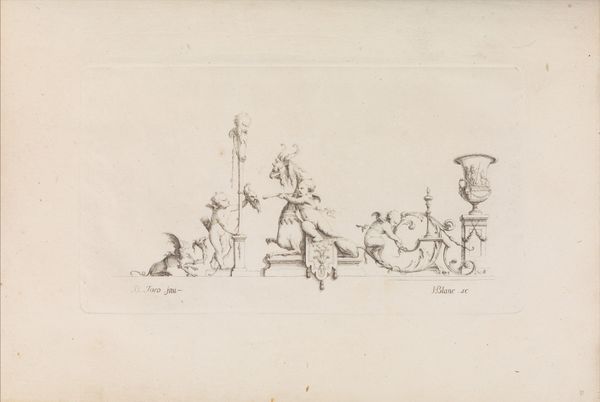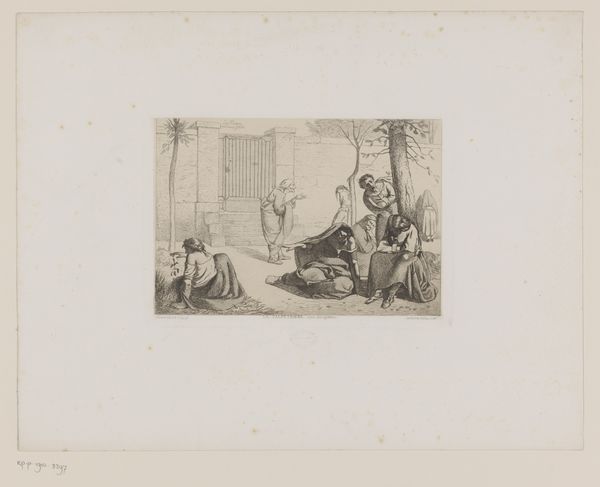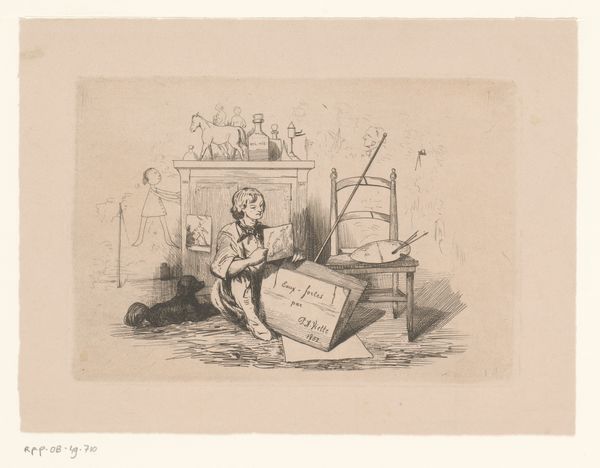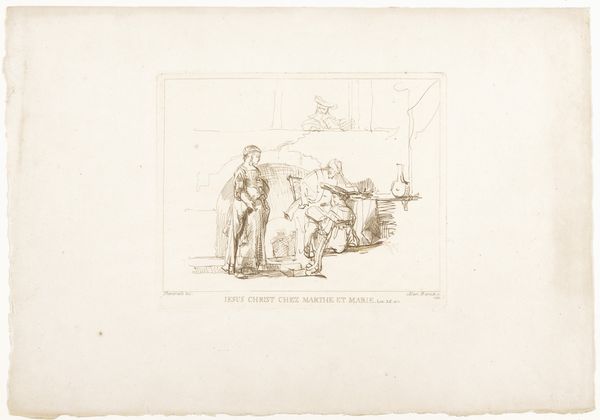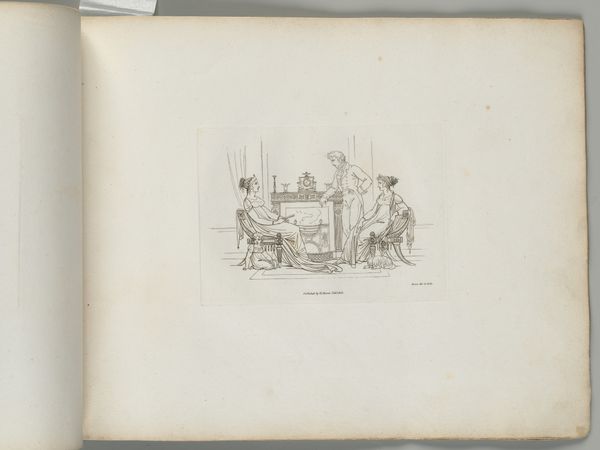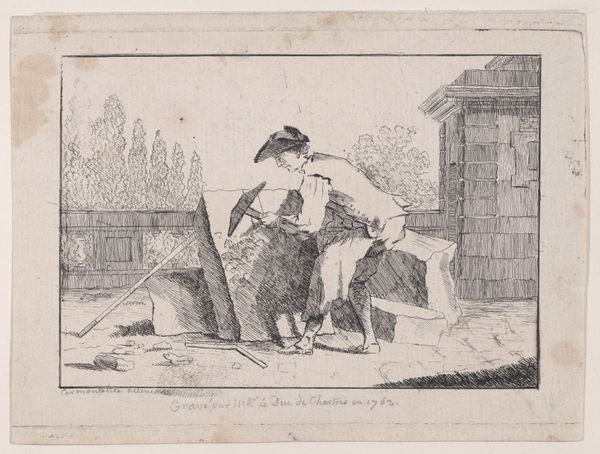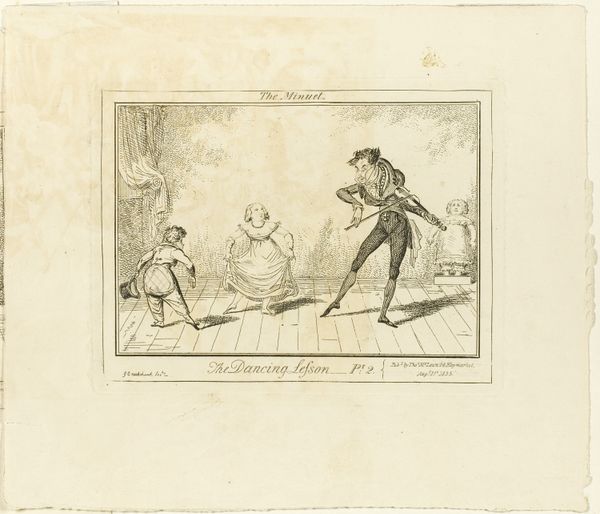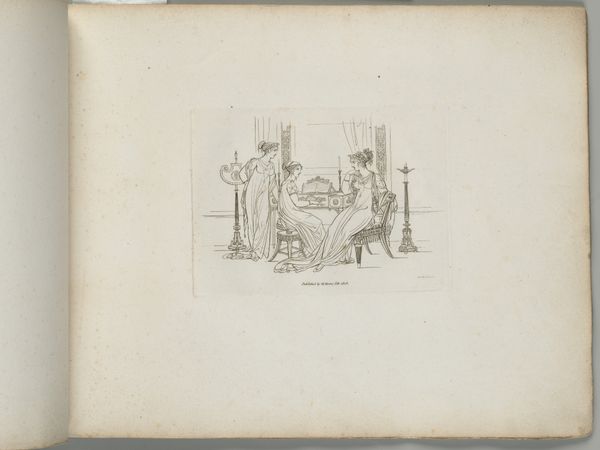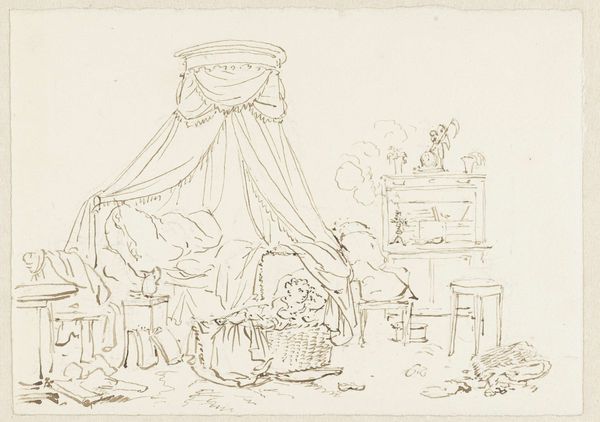
drawing, ink, pen
#
drawing
#
aged paper
#
light pencil work
#
quirky sketch
#
narrative-art
#
sketch book
#
figuration
#
personal sketchbook
#
ink
#
ink drawing experimentation
#
geometric
#
pen-ink sketch
#
sketchbook drawing
#
pen
#
genre-painting
#
storyboard and sketchbook work
#
sketchbook art
Dimensions: height 228 mm, width 286 mm
Copyright: Rijks Museum: Open Domain
Editor: So, this is "Spelende kinderen bij een omgevallen tafel," or "Children Playing by an Overturned Table," by Gijsbertus Johannes van Overbeek, dating sometime between 1892 and 1947. It's an ink and pen drawing, and I'm immediately struck by the chaos captured in this simple sketch. What stands out to you? Curator: What intrigues me is the image's reflection on childhood behavior and social structures within the domestic sphere. Sketches like these offer invaluable insights into the cultural values projected onto children and their play. Consider the gender dynamics at play: What roles are assigned to the boy and girls? Editor: Well, it seems the boy is quite literally under the table, while the girls stand apart, perhaps reacting to the mess. Is this reflective of societal roles even in children’s drawings at that time? Curator: Precisely! The 'genre painting' aspect highlighted tells us something about domestic life. How does this overturned table and implied 'mess' challenge or reinforce conventional expectations of order and decorum within the home, and how do these expectations differ depending on who's transgressing them? Were boys granted more leeway? Are the girls' expressions concern, amusement, or judgement? Editor: It's fascinating to consider how such a simple drawing opens up so many questions about social expectations. It goes beyond just a scene of children playing. Curator: Exactly. And to think, a seemingly simple image captures those fleeting moments and then becomes a social document across time. What was play considered *for* during this era? Freeform expression, social training for gendered norms, or perhaps just inconsequential and immature chaos to ignore until adulthood? Editor: I guess it all prompts a greater recognition of the details we tend to dismiss and the structures that can inform artistic pieces! Thank you!
Comments
No comments
Be the first to comment and join the conversation on the ultimate creative platform.
